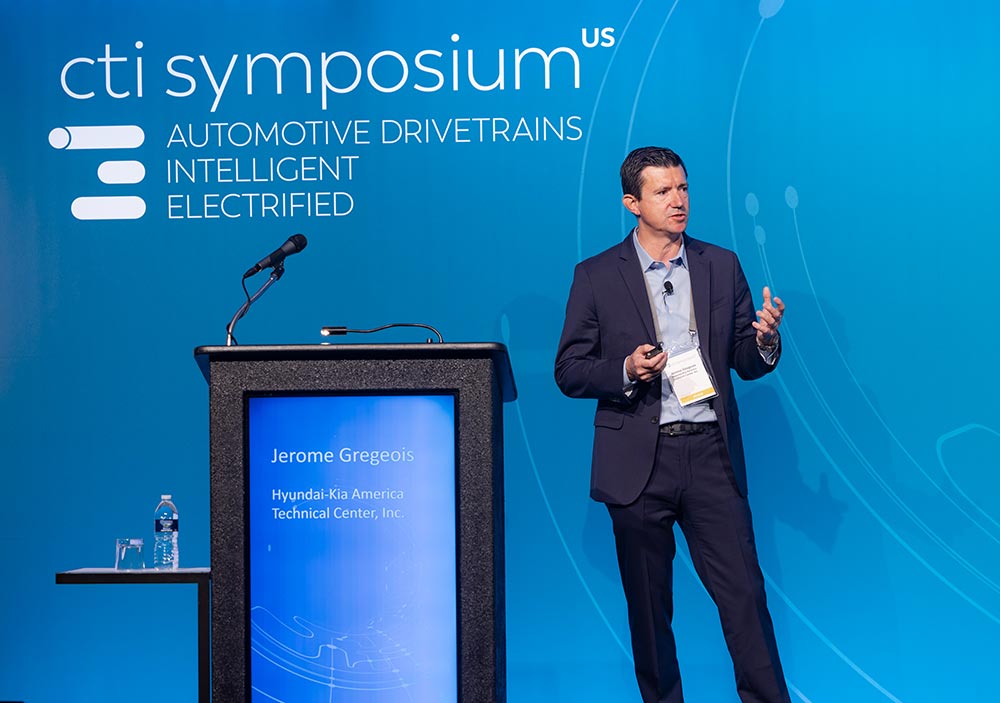
Besides battery electric solutions, Hyundai is also committed to fuel cell vehicles, especially for commercial applications. The company has established truck and bus fleets in South Korea and Switzerland and is currently setting up fleets and services in California. What are the prospects? An interview with Jerome Gregeois, Director Commercial Vehicles Development at Hyundai Kia Technical Center America.
Mr. Gregeois, how is your business with series fuel cell applications developing in global markets?
Korea is our most involved market, with the largest number of vehicle types deployed. We have a light-duty SUV, the Nexo, as well as buses and trucks. In Europe, We are introducing 1,600 trucks by 2025. It was the first project by an OEM for fuel cell class 8 trucks in Europe and started in 2020. For the US, we are currently in a development phase. Next year, in 2023, we will have a deployment at the Port of Oakland in Northern California, with 30 fuel cell trucks as a first step.
How does the cost of developing fuel cell vehicles compare with BEVs?
Fuel cell vehicles are basically electric vehicles. The only difference is the energy storage system. The costs are identical on the motor side, and power electronics are broadly similar. The unique aspect with hydrogen fuel cell is the on-demand, on-board power generation, using stacks. Fuel cell systems require a few more components to handle: the air intake, the hydrogen fuel management, and the thermal management. These are components leveraging mature technologies, which keeps their cost low. The vision we have at Hyundai is cost parity for battery-electric and fuel cell vehicles in the same segment by 2030. By then the Total Cost of Ownership is likely to be lower for hydrogen fuel cell vehicles than battery electric vehicles because electricity prices are likely to go up, and prices for hydrogen are likely to go down from today’s baseline.
In commercial applications, where do you prefer FCEV and where do BEVs make sense?
Fuel cell makes sense for vehicles with a high duty cycle – for example three-shift operation, or very long drives without infrastructure en route. That’s the first kind of application for heavy-duty commercial vehicles – or any commercial vehicle really, anything from 10,000 pounds upwards. Fuel cells also make sense at locations where installing a battery charging infrastructure is difficult – for example in a location that doesn’t have an electrical infrastructure capable of providing the required peak supply, which would require significant and costly upgrades. Another example is a fleet operator who does not own the yard where the trucks are parked, with a landlord not interested in building a charging infrastructure. The bottom line is that if it’s hard to install an infrastructure and you have a high-duty cycle, you will be in a much better position to implement fuel cell trucks.
Would the next stage of chemical processing – e-fuels – also make sense for commercial vehicle applications?
Many things can make sense and work well from a technical point of view. The trick is what the regulator is looking for. And if you’re really looking for absolutely zero-emission vehicles, with nothing at the tailpipe, then your options are battery or fuel cell electric powertrains. With e-fuels there might be no CO2, but there might be other pollutants to consider. If the regulator says zero-emission everywhere and anywhere, that would rule out e-fuel solutions.
What is your opinion on hydrogen for passenger vehicles?
For passenger vehicles, I think the question again is: what’s the usage? In the US, pickup trucks can be heavy vehicles. They can be class 2 or class 3 and still be used as personal vehicles, with occasional medium duty purpose, like camping. In those segments, I see challenges for battery-electric vehicles because the amount of energy needed on board is difficult to achieve with a battery. Battery-electric makes sense in applications like compact or midsize that are mostly used for short commutes, rather than road trips, and if the vehicles can be charged at home. The hydrogen passenger SUV we have at Hyundai right now is the Nexo, a midsize SUV. It gives you about 350 to 380 miles of range, and we get great feedback from consumers about vehicle performance. Generally, the key question is whether the respective paces of infrastructure providers, regulators, and OEMs can be aligned. If there are gaps, it will be challenging.
Interview: Gernot Goppelt
